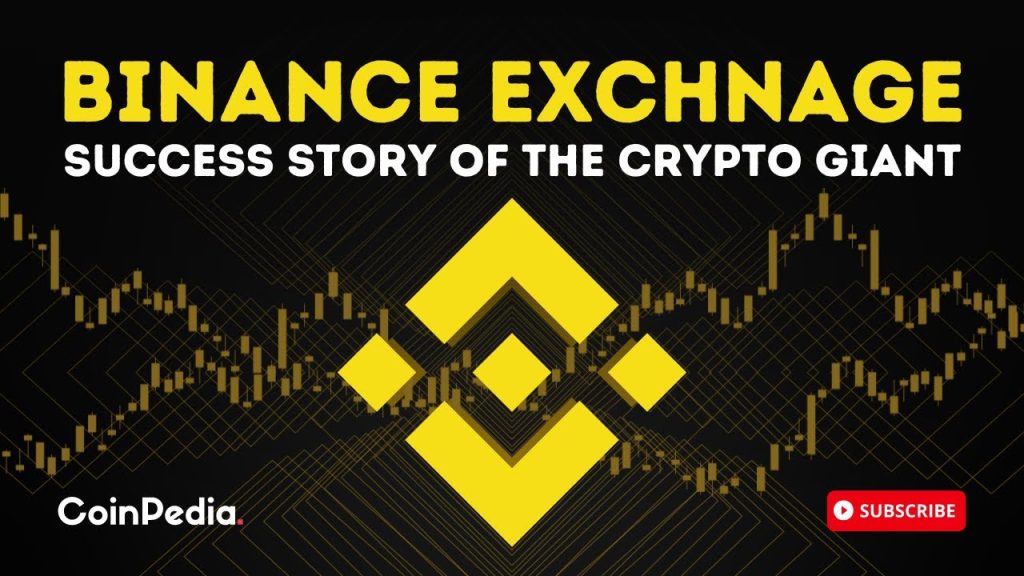Binance – The Cryptocurrency Exchange That Changed the Game


The post Binance – The Cryptocurrency Exchange That Changed the Game appeared first on Coinpedia Fintech News
In the early days of cryptocurrency trading, exchanges were very limited.
The ones that did exist were often plagued with security flaws, slow trade execution, and a limited selection of trading pairs.
As the popularity of cryptocurrency grew, so did the number of exchanges.
But the rising popularity has also led to scams, fraud, and security breaches in many crypto exchanges. Due to the lack of investment protection, many investors remained cautious.
But then, a new player emerged on the scene.
A platform that promised to revolutionize the way we trade cryptocurrencies. A platform that promised to change the game.
“That exchange is none other than Binance.
The name “Binance” is a combination of the words “binary” and “finance.”
Binance is one of the largest and most popular cryptocurrency exchanges in the world, with millions of users and billions of dollars in daily trading volume.
But how did it all begin?
And what makes Binance such a major player in the cryptocurrency industry?
Join us on this journey as we explore the rise of Binance, its unique features, and the impact it has had on the world of cryptocurrency trading.
The Rise of Binance
Binance was founded in 2017 by Changpeng Zhao, a Chinese-born Canadian businessman, investor, and software engineer, who is also known as CZ.
He first learned about Bitcoin in 2013, which immediately captivated his interest, and later he joined Blockchain.info as the third member of their team.
He then went on to work for OKCoin, one of China’s largest cryptocurrency exchanges, before founding his own exchange, Binance. The idea behind the creation of Binance was to build a user-friendly interface, fast transactions, and broad cryptocurrency support.
As of the time being, Binance quickly attracted a global user base of 13 million.
Which continued to innovate, introducing features like Initial Coin Offerings (ICOs) and launching its own blockchain platform, Binance Chain, empowering developers to create their own cryptocurrencies and decentralized applications.
CZ’s vision extended beyond just an exchange, as he promoted blockchain adoption and education through initiatives like Binance Academy. Despite its success, Binance faced regulatory challenges in multiple jurisdictions.
Binance’s Regulatory Challenges
The platform has faced regulatory hurdles in multiple jurisdictions around the world, and there have been some security breaches over the years.
Several countries, including the UK, Japan, and Germany, have tightened regulations, citing concerns over consumer protection and anti-money laundering measures.
To navigate these challenges, Binance has engaged legal teams and implemented Know Your Customer (KYC) and Anti-Money Laundering (AML) procedures to enhance security and prevent fraudulent activity.
Binance has addressed liquidity issues by introducing the Binance Smart Chain (BSC), incentivizing traders with discounted trading fees.
The Binance Smart Chain
The Binance Smart Chain (BSC) is a high-performance blockchain platform for decentralized applications (dApps) and blockchain-based projects. It stands out with its Ethereum compatibility, allowing seamless migration of Ethereum-based dApps to BSC.
Binance Smart Chain even offers faster transaction speeds and lower fees compared to Ethereum, making it more versatile and appealing to developers and users.
With its undeniable influence and prominent position in the cryptocurrency and blockchain industry, Binance has emerged as a major player, garnering immense popularity and recognition.
Binance’s Role in the Cryptocurrency Market
As a result, the rise in cryptocurrency prices can be partly attributed to the significant impact Binance has had on the market.
Not only has the platform played a key role in popularizing new cryptocurrencies and DeFi projects, but it has also been instrumental in driving innovation in the industry.
Binance’s impact on the cryptocurrency market is evident in the surge of meme coins. These coins, once regarded as a joke, have now garnered substantial attention and investment, largely due to Binance’s support. As a result, their popularity and value have soared.
However, Binance’s impact on the cryptocurrency market goes beyond price fluctuations. Through initiatives like Launchpad and NFT Marketplace, Binance actively promotes crypto adoption.
Binance Launchpad empowers emerging crypto projects by facilitating fundraising and community engagement. Projects listed on Binance Launchpad undergo a rigorous selection process to ensure credibility and potential.
Binance NFT Marketplace offers creators a platform to showcase and sell their unique digital assets or NFTs. It enables easy creation, buying, and selling of NFTs, along with trading, bidding, and auction features.
Its commitment extends to charitable causes through its Binance Charity Foundation. With a focus on long-term success and growth, Binance solidifies its leadership as the future of finance.
Conclusion
Looking ahead, Binance’s promising future is fueled by innovation, adaptability, and market anticipation. In 2021, Binance launched a $100 million fund supporting blockchain projects addressing global challenges. They also contributed to COVID-19 relief efforts and charitable organizations.
Facing regulatory charges filed by the SEC, Binance and its founder engage in an ongoing battle. The crypto community awaits the case’s outcome with anticipation.
Binance’s rapid rise to become the world’s largest cryptocurrency exchange is no coincidence. It represents the power of passion, innovation, and commitment to excellence.


